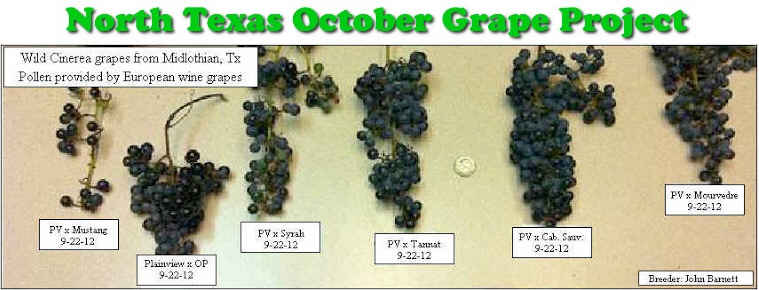The last two months have been devoted to getting the irrigation system up, and keeping seedlings, cuttings and transplants alive. We are making progress, but nothing is done. I'm keeping things alive, though.
It is so hot during the day, I end up having two work sessions. One in the morning, and one after dark, wearing a headlamp. So, at midnight, I am rushing to finish line testing and replacing drippers that are not working.
Something caught my eye. It looked a bit like a caterpillar, which I'm always watching for. On closer inspection, it was a cluster I'd never seen before! It is the first Bridlegate x OP to produce a cluster.
First impressions don't mean much, but the berries are very small. It might be a cultivated wild cinerea female. Bridlegate is a cultivated wild cinerea, and the pollen parent was probably a wild male cinerea. If so, it will be the 4th cultivated wild cinerea in my vineyard, and the first to set a cluster. I'm looking forward to making some wild cinerea wine and trying to find out what it wants to be.

